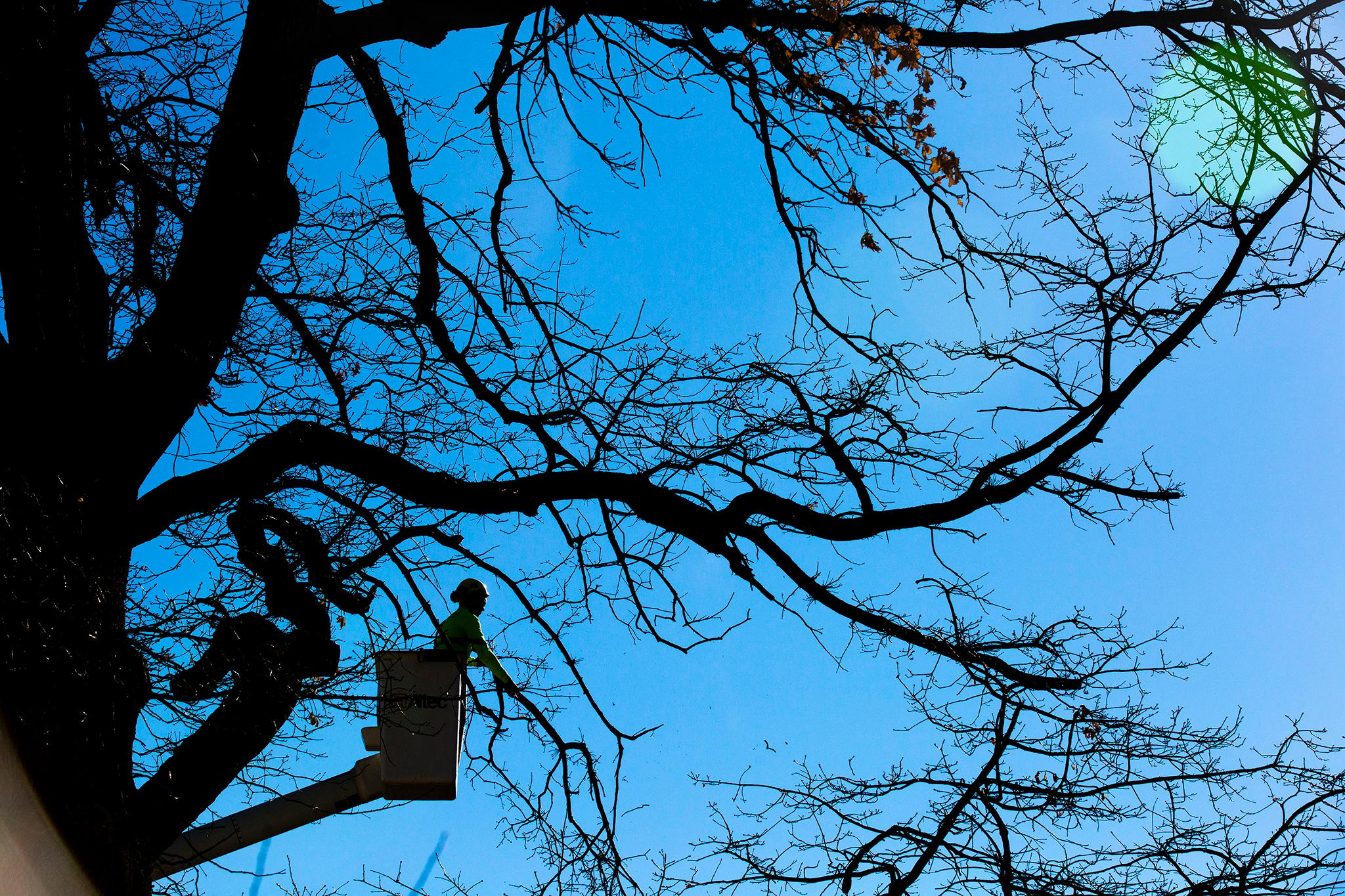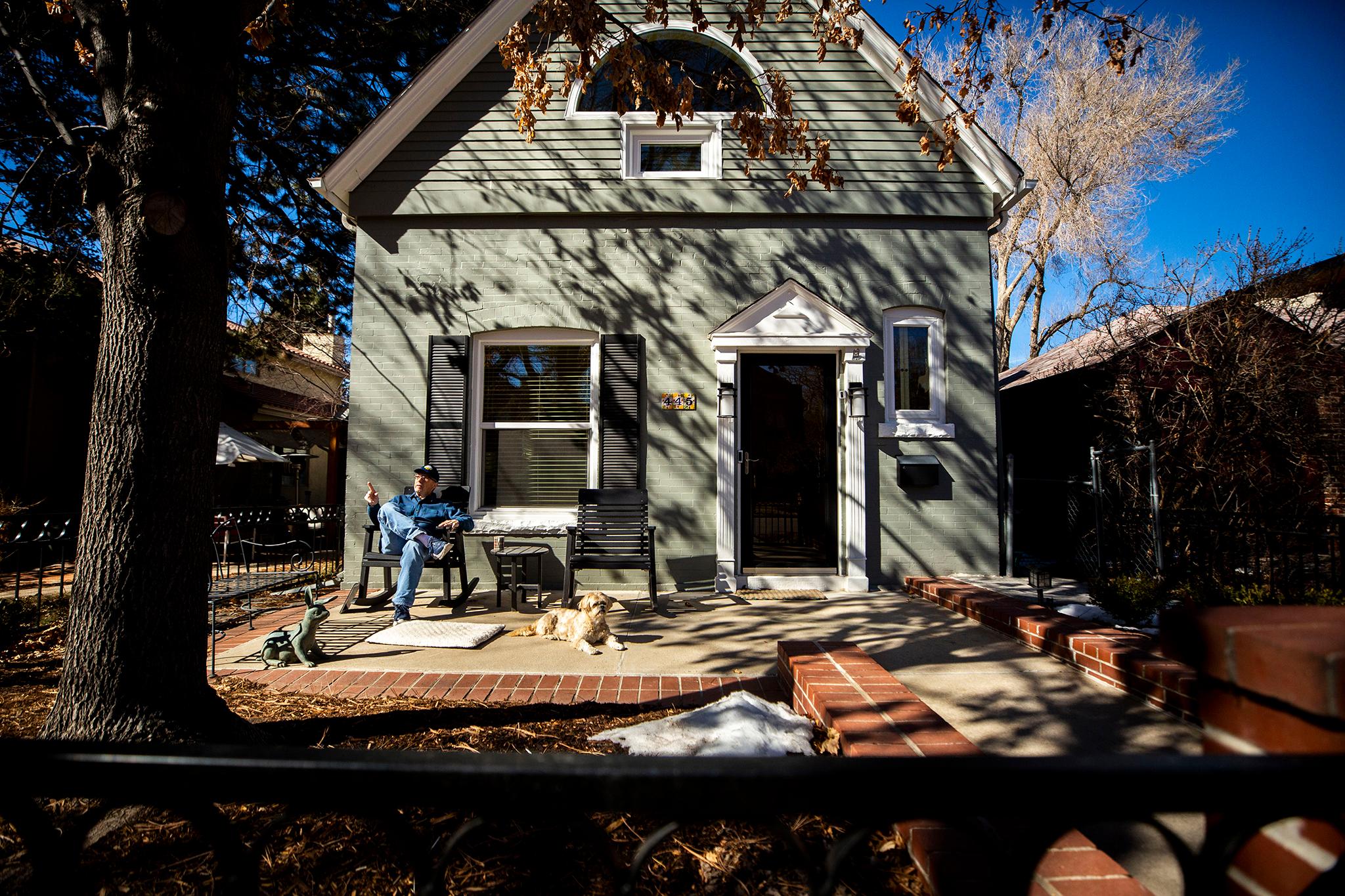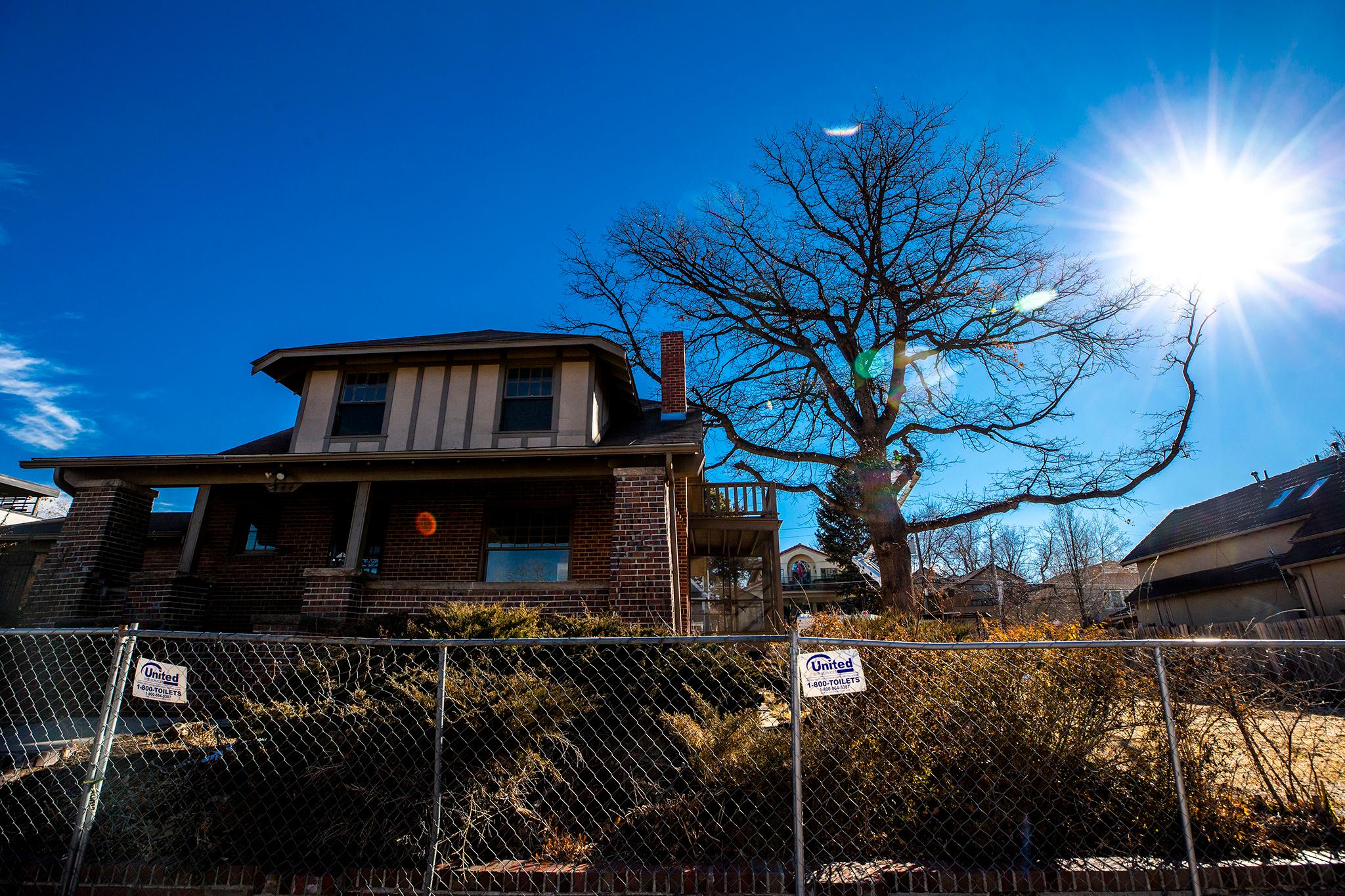The bathroom window at the Foerster family's home in Cherry Creek once framed the towering English oak tree like a painting. But on Tuesday, chainsaws and a cherry-picker took over as workers chopped down the backyard pillar at 444 Milwaukee St. limb by limb.
Nextdoor, Marina Foerster cried.
"It was part of our landscape too," she said with her 12-year-old daughter, Oksana, at her side. Oksana grew up next door to the tree, which was probably over 100 years old, watching squirrels and raccoons use it as part of their urban habitat.
"It was just so old and was a home to all the animals," Oksana said. "It has a right to be there."


Not in the world of private property, it doesn't. A homebuilder bought the plot, worth over $2 million according to city property records, and will scrape the 108-year-old house that the tree once shaded. That's according to Ryan Dirksen, who will be the beneficiary of the 40ish-foot-tall, 41ish-inch-thick souvenir from the city's tree canopy.
Dirksen is a woodworker who owns Where Wood Meets Steel, a high-end custom furniture shop in Globeville. He's thrilled to have a lot of really nice wood -- he loves the gray matte color and character of the oak -- but is pretty annoyed that a healthy, thriving old tree is coming down.
"I may be close to 50, but that tree is twice as old as I am," Dirksen said. "And who am I to cut it down and say, You know what? I'm going to build a big house here."

The way he sees it, at least the tree will get a second life as a table or chairs, maybe live another 100 years, instead of becoming mulch.
"It might be a little vanity for your powder room. It might be bunk beds for your kids. There's no limit," Dirksen said. "Lumber is always available, but this has a story behind it."
That story includes a contested champion title.
Back in 2002, here's what a letter from Denver Parks and Recreation to the former homeowner, Lee Coleman, said:
"The current size of this tree puts it just under the top two for state champion of an English oak in Colorado. Perhaps in years to come this will take over the number one spot. It is indeed a glorious tree and I'm sure it will remain for years to come."
Almost 20 more years, to be exact.
Despite the assertion by the city government and the tree's distinctive size, it doesn't crack the city's group of "champions" -- the largest specimens of a given species -- let alone the state's. Denver's tallest recorded English oak is in Congress Park, and it's 96 feet high, according to the city's tree inventory, which accounts for trees in the public right of way and tree data submitted by private property owners.
Still, the Milwaukee Street tree seems special. Only 25 English oaks in Denver are wider than 36 inches in diameter, according to the inventory. The one cut down Tuesday was between 40 and 42 inches, Dirksen guessed.

Scott Gilmore, deputy director of Denver Parks and Recreation, said the tree might have been a champion at one point, but trees can fall down the list as data collection increases.
Denver is aiming for a lot more tree cover citywide, a cause that development doesn't always help. Neither does disease.
The city aims to raise its current tree canopy from around 13 percent to around 20 percent, Gilmore said. He said that losing a mature tree to development obviously doesn't help that cause, but that's how it goes.
"We want to protect trees as much as possible, but we also understand the challenges of doing that on private property," Gilmore said.
City Councilmember Kendra Black told Denverite that she and Councilmember Paul Kashmann have been bouncing around ideas about a tree ordinance that respects private property rights but also protects trees of a certain age, for example, or height or species. Nothing official is in the works, she said, but she would like to have a conversation with the public about the idea.
Public property isn't always safe for trees, either. Diseases kill mature trees often, Gilmore said. And, worst-case scenario, the emerald ash borer could take down 330,000 trees -- 17 percent of Denver's canopy -- once the beetles arrive. Government crews also killed about 200 trees to turn City Park Golf Course into a flood-water destination, a public project tied to the I-70 widening that will protect neighborhoods in case of a rare large flood. Denver planted saplings in their place -- something that developers do as well.

But saplings won't do anything for the canopy for years, said Larry Martin, who lives behind the yard of the newly dead English oak on Milwaukee. He was having a morning on his porch with his dog, Bonz, to the not-so-relaxing soundtrack of chainsaws. When he first heard them, he was hoping the crews were razing the century-old house, not the century-old tree. But then, he said, he "played nosey neighbor" to find the truth.
"Maybe there are other plans to plant other trees. But I'll never see them. I'll never see them that big," Martin said. "It's a glorious tree. It's too bad it's going away."













